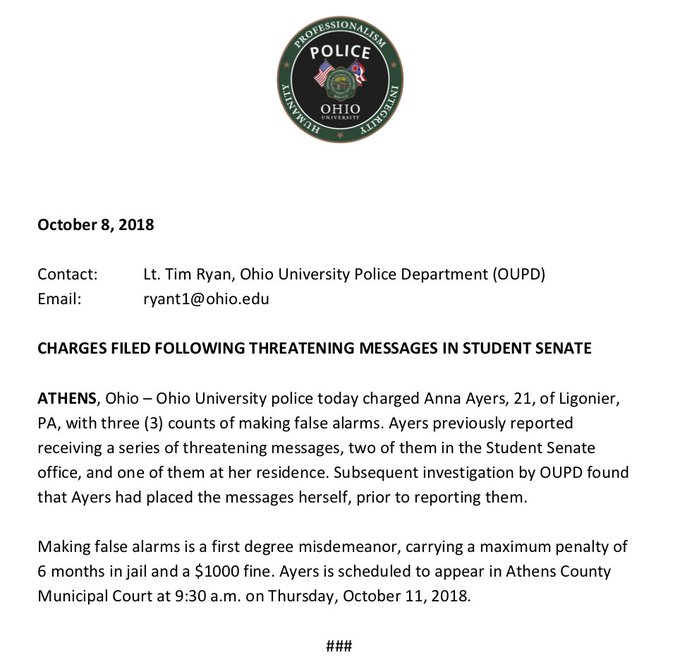What are the details?
According to a report by Campus Reform, police arrested Ayers on Monday and charged her with three counts of “making false alarms.”
Authorities said that Ayers, who is a member of the school’s student Senate, reported that she’d been subjected to death threats and threats in general as a result of being a member of the LGBTQ community. After an investigation, authorities discovered that Ayers had faked the threats, which had been sent to the student Senate office and to her home.
“[A] subsequent investigation by OUPD found that Ayers had placed the messages herself, prior to reporting them,” a spokesperson for the department said, Campus Reform reported.
The outlet also reported that such offenses can carry a penalty of up to six months in jail and a $1,000 fine, according to a news release on the department’s Twitter page.
The caption on the release’s tweet read, “Please see the attached statement regarding charges filed in the recent case of threats made against a member of Student Senate. Since this is a pending criminal case, the police department cannot comment further at this time.”
What have others said about this incident?
In a statement to Campus Reform, student Senate President Maddie Sloat said that the organization is attempting to heal while complying with the department’s investigation into Ayers’ claims.
“We are still processing and encouraging our members to take time to heal and utilize campus support resources right now,” Sloat said in a statement. “We’re complying with the investigation and OUPD. We hope [Ayers] receives the help that she needs.”
The government organization also confirmed that Ayers resigned from her position in the student Senate.
Carly Leatherwood, who is senior director of communications at the school, told the outlet that the school has a process in place to determine whether a crime has been committed.
“All complaints of harassment and threats of violence are...













